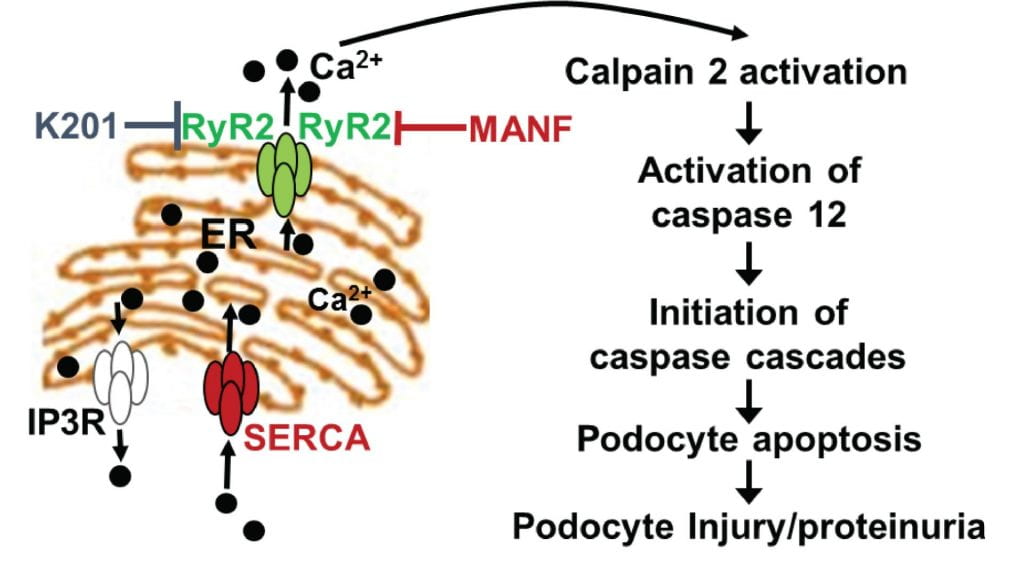A new study first-authored by Sun-Ji Park, found a new class of drugs that shows great promise in the treatment of nephrotic syndrome (NS) resulting from podocyte endoplasmic reticulum (ER) dysfunction.
NS is a leading cause of chronic kidney disease affecting over 500 million people worldwide. Damage to podocytes, the highly specialized epithelial cells that cover the glomerular capillaries in the kidney, is a characteristic feature of NS. While the importance of ER stress in the pathogenesis of NS is acknowledged, no treatment currently targets podocyte ER dysfunction.
We investigated the molecular pathogenesis and treatment of podocyte ER stress-induced NS by using a mouse model of NS caused by LAMB2 C321R, a mutation identified in human patients. Our aim was to determine whether ER calcium homeostasis is dysregulated in podocytes undergoing ER stress and to discover novel therapeutic agents targeting the ER to inhibit podocyte injury and proteinuria in NS, including focal segmental glomerulosclerosis (FSGS).
We found that the podocyte ER calcium release channel, type 2 ryanodine receptor (RyR2), underwent a remodeling during ER stress, resulting in ER calcium leakage and cytosolic calcium elevation. The leaky RyR2 activated cytosolic protease calpain 2, which lead to podocyte injury. However, a chemical compound (K201) and a biotherapeutic protein (MANF) fixed the leaky RyR2 and inhibited podocyte injury. K201 also attenuated proteinuria in our NS mouse model.
The new class of drugs – podocyte ER calcium channel stabilizers – may have wide clinical implications in the treatment of NS, focal segmental glomerulosclerosis (FSGS), membranous nephropathy (MN), minimal change disease (MCD), Alport syndrome and diabetic nephropathy. We, through the Office of Technology Management at Washington University, filed a U.S. nonprovisional patent (Serial No. 16/446073), June 19, 2019.
The article, “Discovery of endoplasmic reticulum calcium stabilizers to rescue ER-stressed podocytes in nephrotic syndrome,” was published in PNAS June 24, 2019.
The study was also highlighted in the June 26 edition of ASN In The Loop, the American Society of Nephrology’s daily e-news briefing that highlights exciting announcements and current research in the world of nephrology.
